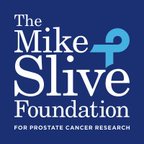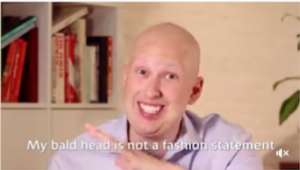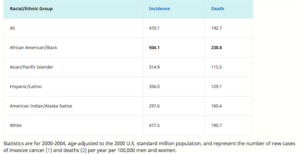According to HemOnc Today:
A 70-gene signature test identified a substantial portion of women with early-stage breast cancer who safely avoid chemotherapy, according to phase 3 study results published in The New England Journal of Medicine.
Treatment of early-stage breast cancer frequently involves adjuvant systemic therapy platforms, including chemotherapy, endocrine therapy and HER-2–targeted therapies. However, algorithms to aid in treatment decisions do not account for individual biological tumor characteristics, which may lead to overtreatment.
Gene-expression studies have identified molecularly distinct breast cancer subtypes and may potentially be used to direct treatment.
Fatima Cardoso, MD, director of the breast unit at Champalimaud Clinical Center in Lisbon, Portugal, and colleagues sought to determine whether a 70-gene signature (MammaPrint, Agendia) could be used to select patients for adjuvant chemotherapy.
Cardoso and colleagues conducted an international, prospective randomized trial of 6,693 women (median age, 55 years; range, 23-71) with early-stage breast cancer.
The researchers used MammaPrint to determine patients’ genomic risk, in addition to a modified version of Adjuvant! Online to determine clinical risk.
Women with high genomic and clinical risk factors were offered chemotherapy; women at low genomic and clinical risk were not.
Women with discordant results — a high clinical risk with low genomic risk, or vice versa — were randomly assigned to chemotherapy or no chemotherapy based on either result.
Survival without distant metastasis at 5 years served as the primary endpoint. The researchers evaluated whether women with high-risk clinical features but low-risk genomic features could achieve a noninferior rate of 5-year survival without distant metastasis, based on a lower boundary of the 95% CI of 92% or higher.
A total of 1,550 patients (23.2% of the overall cohort) had a low genomic risk profile with a high clinical risk factor, of whom 1,497 underwent randomization (chemotherapy, n = 749; no chemotherapy, n = 748).
Among patients who did not receive chemotherapy, 94.7% (95% CI, 92.5-96.2) achieved 5-year survival without distant metastasis, exceeding the study’s noninferiority threshold.
The rate of 5-year survival without distant metastasis was 95.9% (95% CI, 94-97.2) among patients assigned chemotherapy based on clinical risk, compared with 94.4% (95% CI, 92.3-95.9) among patients who did not receive chemotherapy based on genomic risk. This corresponded with an absolute difference of 1.5 percentage points (adjusted HR = 0.78; 95% CI, 0.5-1.21).
The rate of 5-year survival without distant metastasis was 95.8% (95% CI, 92.9-97.6) among patients assigned chemotherapy based on genomic risk, compared with 95% (95% CI, 91.8-97) among patients who did not receive chemotherapy based on clinical risk (adjusted HR = 1.17; 95% CI, 0.59-2.28). The researchers determined there was no advantage to provide chemotherapy based on genomic risk alone.
Results of subgroup analyses showed similar rates of survival without distant metastasis among patients with node-negative disease (chemotherapy vs. no chemotherapy, 95.7% vs. 93.2%), node-positive disease (96.3% vs. 95.6%), and those with ER–positive, HER-2–negative, node-negative disease (95.5% vs. 93.9%).
A multivariate analysis showed that use of the 70-gene signature remained significantly associated with survival without distant metastasis after adjustment for chemotherapy receipt, clinical risk, and patient and tumor characteristics (HR for high-genomic vs. low-genomic risk = 2.41; 95% CI, 1.79-3.26).
“We found that chemotherapy with its attendant toxic effects could be avoided in these patients at high clinical risk but low genetic risk, at a cost of a risk of distant metastasis at 5 years that is 1.5 percentage points higher,” Cardoso and colleagues wrote. “Follow-up is ongoing to determine whether these conclusions remain valid for longer-term outcome.” – by Cameron Kelsall
http://www.healio.com/hematology-oncology/breast-cancer/news/in-the-journals/%7B918c99cf-f531-4826-b75d-1a39422f569f%7D/genomic-risk-test-may-guide-use-of-chemotherapy-for-early-stage-breast-cancer
 What a privilege and thrill to be on hand last week for the official launch of the Mike Slive Foundation for Prostate Cancer Research. It was exciting to imagine the possibilities — for better detection, for better treatments, for cures — to combat a cancer that strikes one in seven men.
What a privilege and thrill to be on hand last week for the official launch of the Mike Slive Foundation for Prostate Cancer Research. It was exciting to imagine the possibilities — for better detection, for better treatments, for cures — to combat a cancer that strikes one in seven men. David York was a friend and a member of the Survivors CAN board. He had been diagnosed with advanced prostate cancer at age 44. At the time, reaching his 50th birthday seemed a long shot. When pressed, doctors told him he had a couple of years to live.
David York was a friend and a member of the Survivors CAN board. He had been diagnosed with advanced prostate cancer at age 44. At the time, reaching his 50th birthday seemed a long shot. When pressed, doctors told him he had a couple of years to live.


 d news is, those efforts have paid dividends. The bad news is that there is still much work to be done!
d news is, those efforts have paid dividends. The bad news is that there is still much work to be done!